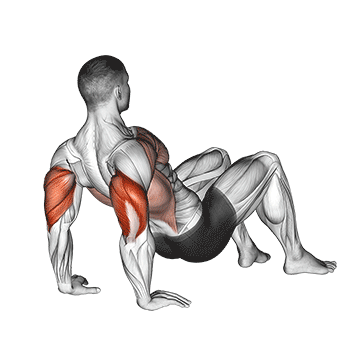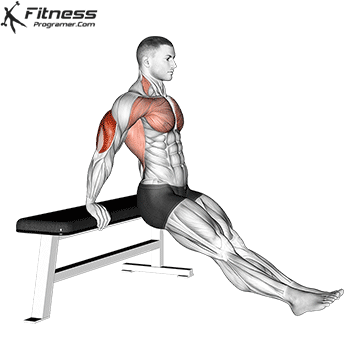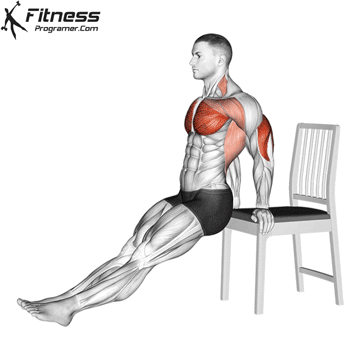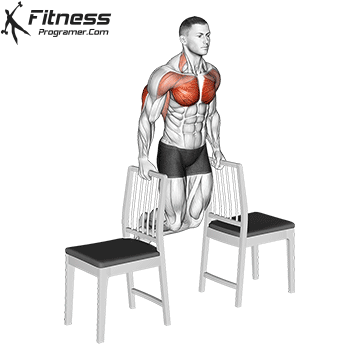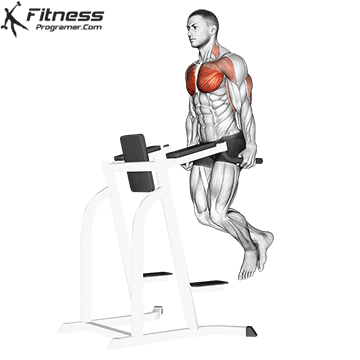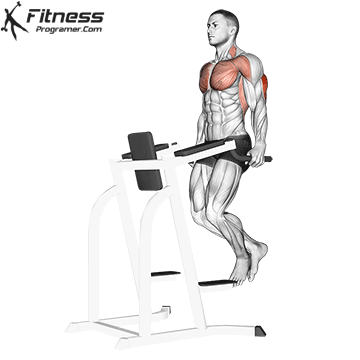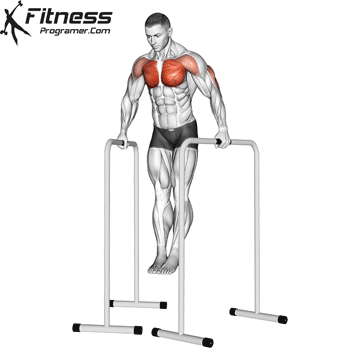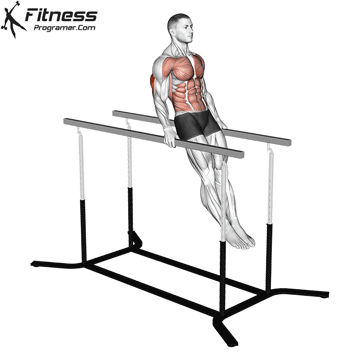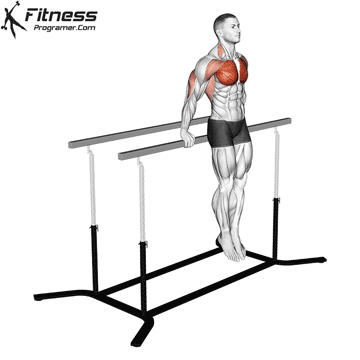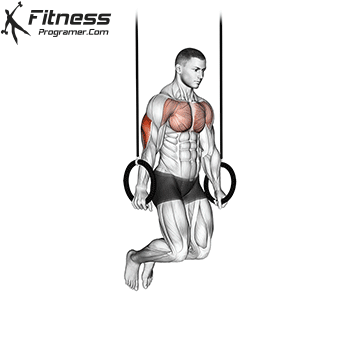Overview
The One-Arm Single-Leg Bench Dip is a progression of the classic bench dip that involves using only one arm for support and extending one leg off the ground. By reducing points of contact, this variation maximizes the load on the triceps while demanding significant core engagement and balance. It’s often used in calisthenics and bodyweight training routines to build unilateral strength and coordination.
How to perform One-Arm Single-Leg Bench Dips
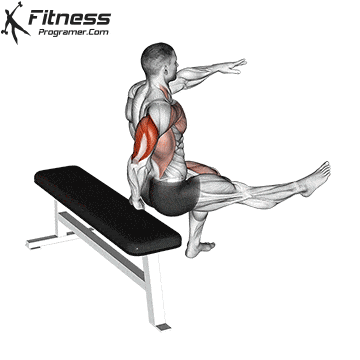
Sit on the edge of a flat bench with your legs extended in front of you and hands resting on the bench just outside your hips.
Lift one leg off the ground and extend it straight.
Place your opposite hand behind you on the bench and lift your hips off the surface, supporting your body with that arm and your grounded heel.
Lower your body by bending the working elbow, keeping your back close to the bench.
Descend until your elbow forms a 90-degree angle or as low as your mobility allows.
Push through your palm to return to the starting position.
Repeat for reps, then switch sides to balance the training.
Tips for Proper Form
Keep your torso upright and close to the bench to reduce shoulder stress.
Brace your core throughout to stabilize your body and prevent twisting.
Lower slowly and maintain control, especially when pushing back up.
Extend the non-working leg fully to increase balance challenge and core engagement.
Ensure your elbow stays tucked in, not flaring outward during the dip.
Common Mistakes
Leaning too far forward, placing stress on the front of the shoulder.
Letting the torso rotate or twist, which reduces control and muscle isolation.
Dropping too fast into the dip, which risks injury due to lack of control.
Flaring the elbow outward, reducing triceps engagement and increasing joint strain.
Using momentum instead of strict, controlled movement.
Benefits of the One-Arm Single-Leg Bench Dips
Maximizes triceps activation: Using one arm increases the load per side, encouraging greater muscle recruitment in the triceps.
Improves unilateral upper body strength: Each side works independently, addressing imbalances and enhancing joint control.
Challenges core stability and control: Lifting one leg forces the core to stabilize your body and resist rotation.
Develops shoulder stability and coordination: The instability of the position promotes shoulder joint integrity and motor control.
Minimal equipment needed: All you need is a sturdy bench or elevated surface to perform the movement anywhere.
Supports advanced calisthenics strength goals: Builds body awareness, strength, and mobility helpful for progressing to higher-level dips and push movements.
Engages full-body coordination: While the primary focus is the triceps, your legs, glutes, and obliques help maintain control throughout.
How to Incorporate Into Your Routine
This dip variation works best in advanced training sessions or as a finisher for bodyweight upper body workouts.
- For Strength: Perform 3 to 4 sets of 4 to 6 reps per side using slow, controlled movement.
- For Hypertrophy: Combine with other triceps exercises and do 3-4 sets of 8 to 12 reps.
- For Functional Training: Pair with single-arm rows or unilateral push-ups to improve imbalanced strength.
- For Circuit Training: Include 6 to 8 reps per arm in a push-pull bodyweight circuit.
- For General Fitness: Add 2 sets of 5 to 8 reps per arm at the end of your upper body workout.
- For Core Stability: Incorporate into core circuits with side planks and hanging leg raises to enhance rotational stability.
Muscles worked
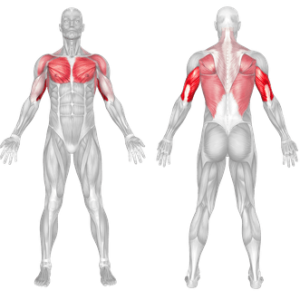
Frequently Asked Questions
Is this exercise suitable for beginners?
No, it’s a highly advanced variation. Beginners should master standard bench dips and then progress through intermediate versions before attempting this.
What if I feel shoulder discomfort?
Check your form. Keep your torso close to the bench and do not let the elbow flare. Discomfort may signal poor alignment or the need for a regression.
Can I modify this exercise?
Yes. Keep both legs down but use one arm, or keep both arms but lift one leg to gradually work up to this full variation.
How often should I include this?
Once or twice a week is enough if you already train upper body strength. Allow rest days between heavy triceps sessions.

